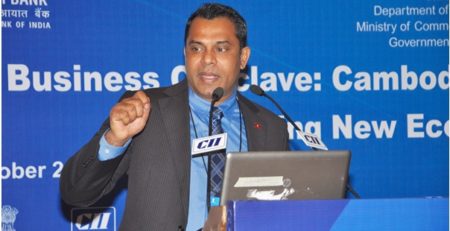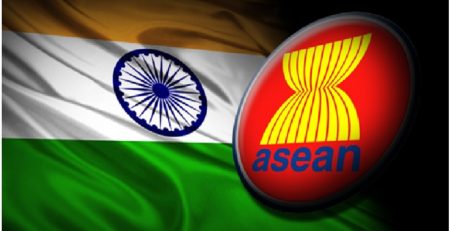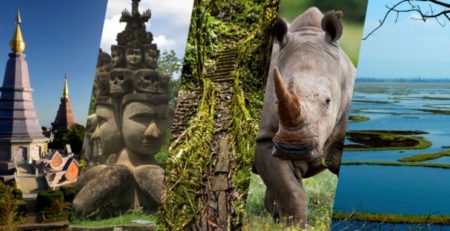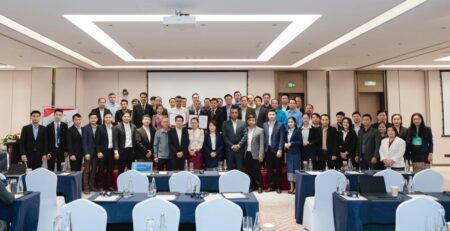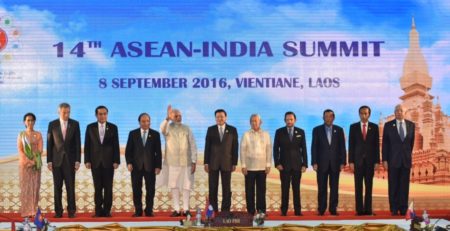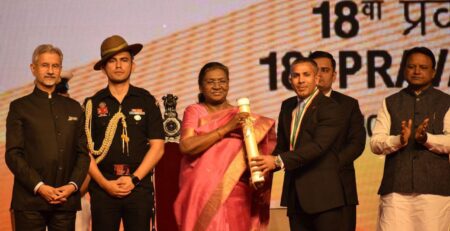Cultural and Educational Exchange between South-East Asia and North-East India
Southeast Asia and India share an intrinsic connection that dates back to centuries. The shared heritage between India and the South-east Asian region ranging from Borobudor in Indonesia to Angkor Wat, the world’s largest religious monument in Cambodia, andthe Thai epic Ramakien based on the Ramayana etc are well known and documented.
Performance of Lao Traditional Music and Dance at the Gala Dinner for ICC India Investrade Delegates at Vientiane, Lao PDR
There is an immense shared cultural and traditional heritage especially between the Northeastern part of India and the Southeast Nations that needs to be explored in order to strengthen the linkages between the two geographical regions. The common physical features, similarities in art and dance forms, social structure, eating habits, weaving motifs, hunting practices and cultural practices put the Northeast region in a favorablejuxtaposition with the Southeast Asian nations.
Bihu Dance performance for the Delegates from Lao PDR for the 1st Laos – Northeast India Business Forum at Guwahati, Assam, India
To accomplish India’s ambitious ‘ACT EAST POLICY, apart from trade ties, cultural and educational tie needs to be synchronized with the SoutheastAsian nations. Socio-cultural cooperation and promotion of greater people-to-people interaction through increasing exchanges in culture, education, youth, sports, science and technology, human resource development and scholarly exchanges are areas which would lead to integration. Dissemination of knowledge about the civilization links between the two regions is a way forward.
International Day of Yoga celebrated at That Luang Temple, Vientiane, Lao PDR
By educating people about our common cultural heritage we can unify and help form close economic collaboration between Northeast India and Southeast Asian nations. Many communities in Northeast India traces their origin south of the Yarlung Zangbo, source of the Brahmaputra River, including the Tai-Ahoms or Ahoms, an offspring of the Tai people who are called Shan in Myanmar, Thai in Thailand, Lao in Laos, Dai and Zhuang in China and Tay-Thai in Vietnam. In fact, there is small community in Dibrugarh, Assam, that till date follows the customs and scriptures of the Tai race and speaks in Tai language.
The oral history of Chin-Kuki-Mizo communities places their origin to Sinlung/Chinlung or closed cave, probably the Great Wall in China. Similarities in the nouns between Chinese languages and speeches used among communities in Northeast India and Southeast Asia are also a point worth investigating.
Golden Pagoda Monastery – Arunachal Pradesh, India
Northeast India houses many important Buddhist sites and important monasteries. The path of the Buddha can be traced from Arunachal Pradesh to Myanmar and beyond. India could then utilize the Buddhist heritage circuits, so that there is an increase in the Asian pilgrims annually. This in turn will encourage greater interaction leading to an increase in trade, commerce and tourism in the entire region.
Educational exchange between the two regions can also boost the ties and help integrate the relation. Courses on Southeast Asian history, politics, languages etc can be introduced in universities so that students are exposed to the world of Southeast Asia. Similarly, there could be exchange of students, teachers between the universities of Northeast India and Universities of Southeast Asia.
India has been supporting ASEAN, especially CLMV countries under the Initiatives for ASEAN Integration, which include projects on Training of English Language for Law Enforcement Officers in CLMV (Cambodia, Laos, Malaysia and Vietnam) countries and Training of professionals dealing with capital markets in CLMV by National Institute of Securities Management Mumbai, scholarships for ASEAN students for higher education at Nalanda University, Training of ASEAN Civil Servants in drought management, disaster risk management, sustainable ground water management etc. To boost people-to-people interaction, India has been organizing various programmes including participation of ASEAN students in the National Children’s Science Congress, ASEAN-India Network of Think Tanks, ASEAN-India Eminent Persons Lecture Series, ASEAN-India Students Exchange programme, ASEAN-India Media Exchange programme etc. Similar programmes needs to be initiated specifically for the Northeast Indian and Southeast Asian students.
An important contribution has been the ASEAN Studies Centre Inaugurated on 8 August 2016, functioning from the Indian Council of Social Science and Research-North Eastern Regional Centre located in the North-Eastern Hill University (NEHU) in Shillong. The Centre is proposed to serve as a stakeholder in the North-eastern region and ASEAN by facilitating ASEAN-India research projects, studies, workshops and related activities.
Another is the Centre for South and South East Asian Studies, under the Political Science Department of Gauhati University. These educational centers will surely help propagate understanding of both the regions through research studies into the cultural, political, economic aspects of the ASEAN countries.
Keying on the traditional and cultural link, Northeast India can act as bridge for India to the Southeast Asia Nations and help bring forward a synergic relation that stands to benefit both the regions.
#NortheastIndia #SoutheastAsia #Culture #Education #HSMMGroup #ACTEASTPOLICY













